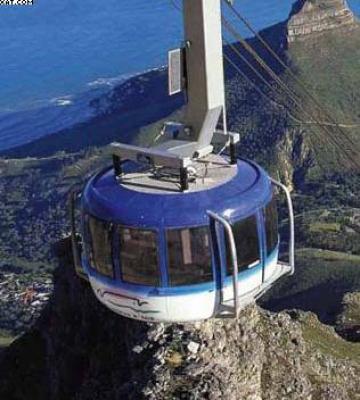

South Africa's great weather and wild terrain means that it offers some of the best rock climbing in the world.
We have diverse rock formations, all with different features, right across the country: Limestone stalactites in Oudsthoorn; solid sandstone ledges in the Cedarberg; bolted sport climbing in the exquisite and well-developed Waterval Boven area; traditional climbing in the Free State, Mount Everest and Swinburne; hard overhangs at the famous Wave Cave at Shongweni near Durban; seaside cliff climbing at Morgan Bay; world class bouldering at Rocklands in the Cedarberg and remote multi-pitch trad/country climbing at Magaliesberg and the Drakensberg Mountains.
In the North of the country, the Waterval
Boven area in Mpumalanga offers some of the best sport climbing. The
Restaurant (officially known as "The Restaurant at the end of the
Universe crags") offers more than 500 routes from scramble-easy to
superhuman, and numerous rock faces still remain unexplored.
And
in the South, nothing can beat Cape Town, with hundreds of sport and
traditional routes within the city limits. The city is built around
Table Mountain, a national park consisting of two great, hard rock types
- Table Mountain sandstone, which gives nice positive edges, and Cape
granite, which offers fantastic friction climbing.
The
MCSA offers climbing, mountaineering and hiking opportunities to its
members and is involved in mountain search and rescue, training,
conservation of mountain areas, procurement of access for
mountaineering, and competition climbing. They're also affiliated to the
world mountaineering body UIAA.
The club has 13 autonomous
sections, in Cape Town, Johannesburg, KwaZulu-Natal, Eastern Province,
Magaliesberg, Stellenbosch, Free State, Hottentots Holland, Amajuba,
Namibia, Paarl-Wellington, Tygerberg and Worcester.
Contact them on Tel: +27 (0)21 465 3412 (CapeTown) or +27 (0)11 807 1310 (Johannesburg)
Traditional or 'trad' climbing is the oldest form of climbing, where you place your own gear including cams, nuts and slings for protection. Routes tend to follow natural lines or cracks where gear can be placed.
You can revel in miles of unbolted rock in the fantastic, virtually pristine Blouberg in the Limpopo, the Drakensberg in KwaZulu Natal, the Magaliesburg in North West near both Johannesburg and Pretoria, or in the miles and miles of fantastic mountain ranges in the Western Cape.
Sport climbing has gained huge popularity over the past 10-15 years and because of this, most people probably climb bolted routes rather than traditional routes. For sport climbing one only needs a harness, rope, quickdraws and shoes.
Bolted routes in good hard sandstone may be found in the eastern part of the Free State, especially at the Mount Everest nature reserve near Harrismith, or in the Western Cape at the world-class Cedarberg, a two-and-a-half hour drive north of Cape Town.
Competition Climbing is a natural offshoot of artificial wall climbing. Artificial walls were built to train on during the week, during bad weather or when they couldn't get out to the cliffs. Most climbing clubs have their own artificial walls, and many gyms have one too.
Bouldering has fairly recently become more popular although has been practised from the earliest of climbing days. It is is a form of rock climbing practiced close to the ground where the danger level is minimal, so eliminating the need for expensive equipment and making it a good way to get started in climbing.
But many climbers boulder on a regular basis to keep in shape, because their focus is on hard problems and technical moves that are needed to succeed in conventional climbing. The difficult moves can be attempted again and again until they are achieved, improving strength and skill rapidly.